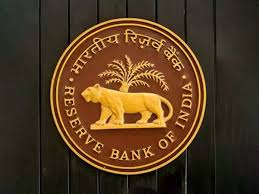
India's central bank, the Reserve Bank of India (RBI), announced on Wednesday that three major Indian banks—State Bank of India (SBI), HDFC Bank, and ICICI Bank—will continue to hold the status of Domestic Systemically Important Banks (D-SIBs). This designation means that these banks are crucial to the country's financial system, and their failure could pose a risk to broader financial stability. The RBI also outlined new capital buffer requirements for SBI and HDFC Bank, effective from April 2025.
The D-SIB status was introduced by the RBI in 2014 to address the risk posed by large, systemically important financial institutions. Such banks are considered "too big to fail," meaning their collapse could lead to a severe crisis in the economy. As part of the D-SIB framework, these banks are required to maintain additional capital buffers over and above the standard capital adequacy requirements. This is to ensure that they can weather financial stress without affecting the overall financial system.
SBI, ICICI Bank, and HDFC Bank have held D-SIB status for several years. SBI and ICICI Bank were included in the list in 2015 and 2016, respectively, while HDFC Bank joined in 2017. Following its merger with its parent company HDFC in December 2023, HDFC Bank was moved to a higher "bucket" due to its increased size and systemic importance. The RBI’s latest decision requires both SBI and HDFC Bank to significantly increase their capital buffers starting in April 2025.
Specifically, SBI will need to raise its additional capital buffer from 0.60% to 0.80% of its risk-weighted assets. Similarly, HDFC Bank will be required to increase its capital surcharge from 0.20% to 0.40%. These measures are aimed at strengthening the stability of these banks in the face of potential economic shocks.
While ICICI Bank's capital requirements remain unchanged, the RBI’s adjustments to SBI and HDFC Bank reflect their growing importance in the Indian banking system. As of now, these three banks dominate the country's financial landscape, with SBI being the largest lender, followed by HDFC and ICICI.
The move to enhance capital buffers comes at a time when India’s banking sector is undergoing significant transformations, including mergers and acquisitions and the increasing adoption of digital banking. Analysts have suggested that the increased capital requirements will help improve the banks' resilience, particularly as India faces potential economic headwinds, including rising inflation and global financial instability.
In conclusion, the RBI’s decision to set higher capital buffer requirements for SBI and HDFC Bank underscores the central bank's commitment to ensuring financial stability in India. By imposing stricter capital norms on these important institutions, the RBI aims to safeguard the Indian banking sector against potential risks and ensure that these banks remain capable of supporting the country’s growing economy.
(Source:www.livemint.com)
The D-SIB status was introduced by the RBI in 2014 to address the risk posed by large, systemically important financial institutions. Such banks are considered "too big to fail," meaning their collapse could lead to a severe crisis in the economy. As part of the D-SIB framework, these banks are required to maintain additional capital buffers over and above the standard capital adequacy requirements. This is to ensure that they can weather financial stress without affecting the overall financial system.
SBI, ICICI Bank, and HDFC Bank have held D-SIB status for several years. SBI and ICICI Bank were included in the list in 2015 and 2016, respectively, while HDFC Bank joined in 2017. Following its merger with its parent company HDFC in December 2023, HDFC Bank was moved to a higher "bucket" due to its increased size and systemic importance. The RBI’s latest decision requires both SBI and HDFC Bank to significantly increase their capital buffers starting in April 2025.
Specifically, SBI will need to raise its additional capital buffer from 0.60% to 0.80% of its risk-weighted assets. Similarly, HDFC Bank will be required to increase its capital surcharge from 0.20% to 0.40%. These measures are aimed at strengthening the stability of these banks in the face of potential economic shocks.
While ICICI Bank's capital requirements remain unchanged, the RBI’s adjustments to SBI and HDFC Bank reflect their growing importance in the Indian banking system. As of now, these three banks dominate the country's financial landscape, with SBI being the largest lender, followed by HDFC and ICICI.
The move to enhance capital buffers comes at a time when India’s banking sector is undergoing significant transformations, including mergers and acquisitions and the increasing adoption of digital banking. Analysts have suggested that the increased capital requirements will help improve the banks' resilience, particularly as India faces potential economic headwinds, including rising inflation and global financial instability.
In conclusion, the RBI’s decision to set higher capital buffer requirements for SBI and HDFC Bank underscores the central bank's commitment to ensuring financial stability in India. By imposing stricter capital norms on these important institutions, the RBI aims to safeguard the Indian banking sector against potential risks and ensure that these banks remain capable of supporting the country’s growing economy.
(Source:www.livemint.com)





